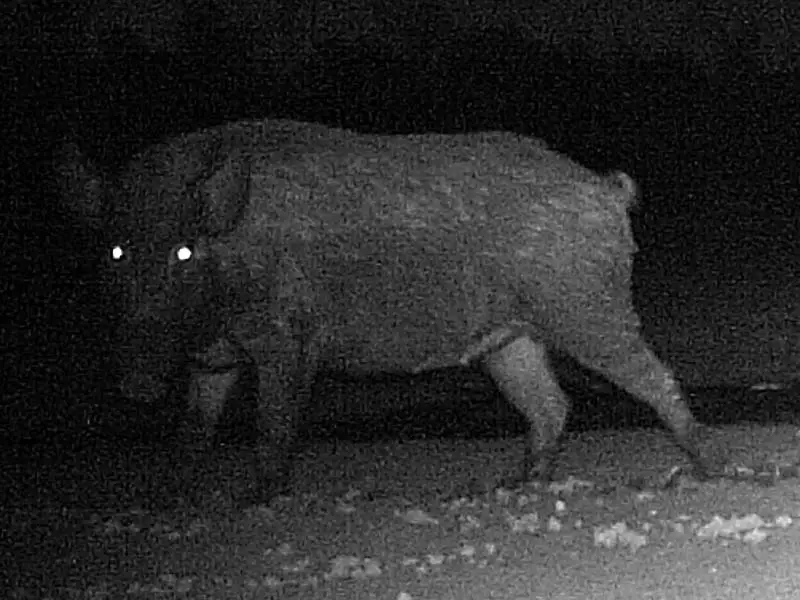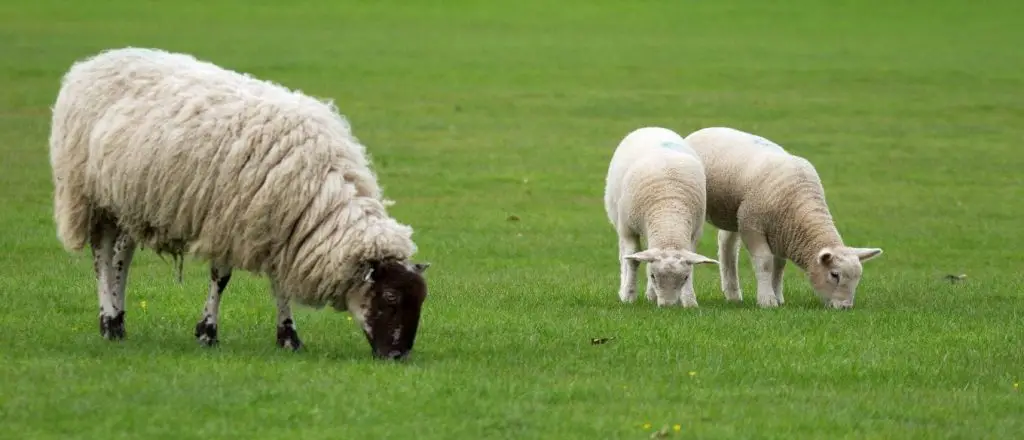Their love for mud may make pigs seem like stupid and dirty farm animals but this couldn’t be further from the truth. Pigs love mud because they do not possess any sweat glands as humans do. This is why they’re always in the mud, because there’s no other effective way for them to cool down other than the cool and wet mud. Well, since we started off on an interesting note. You may ask yourself a question most people may have of particular animals, and that’s whether or not they can see in the dark. In this case, pigs. Can pigs see in the dark? That’s an interesting question with likely interesting answers. Let’s find out more.
Contents
How Pigs See In The First Place
Compared to humans, pigs have very poor eyesight. This is because pigs can only see a limited amount of color hues and depths. Humans have what is known in optometry as trichromatic vision, which is what allows our eyes to see and perceive a wide array of color hues and depths. Pigs however have what is known as dichromatic vision, which allows pigs to see in color but only to a certain extent; meaning they may not perceive exactly the same colors as humans. For example, a pig would not marvel at the amazing color variations and depth resolution of an 8K television as much as a human would. The pigs’ dichromatic vision simply doesn’t allow them to perceive and distinguish some of the visible light wavelengths on the electromagnetic scale, and this is very crucial to understand.
Why Pigs Cannot See In The Dark
Pigs cannot see in the dark and neither can humans. This is because both humans and pigs are not animals that hunt or mainly move around during the night; where the ability to see in the dark would be quite crucial to their survival. Pigs and human are both diurnal, which means they’re both active during the day. When it is nighttime however, it I’d usually time to rest and recooper.
They Are Not Nocturnal Animals
As mentioned above, pigs are diurnal, which means they’re really only active during daytime. But there’s another group of animals known as nocturnal animals and they are mainly active during nighttime when it is dark outside. As you can imagine, nocturnal animals have pretty good night vision, that is why they’re always active during nighttime as opposed to daytime. These nocturnal animals include bats, cats, foxes, rodents, etcetera. What makes all of these nocturnal (some being both diurnal and nocturnal) is because their eyes contain an extra layer of tissue called the tapetum lucidum (that sits right behind or within the retina of the eye) and it helps reflect visible light (or the wavelengths thereof) so as to increase the light available for their eyes to perceive.
- Pigs do not have this extra layer of tissue (tapetum lucidum) and neither do humans because we did not evolve to need it. A pig’s eyes cannot reflect light back to an object when there is minimal lighting around (that’s to say when it is dark out.)
- In addition to having an extra layer of tissue to increase the chances of seeing in the dark, nocturnal animals have pupils thar dilate (enlarge) than most other animals. These [nocturnal] animals are your owls, deer, cats, etcetera. This biological feature allows the eyes of nocturnal animals to allow more light into their eyes and produce a clear and bright image of what the nocturnal animal might be looking at, even when it is perfectly pitch-black dark outside.
- When you flash a torch at an animal and their eyes start to glow (or reflect back the light) the animal is probably nocturnal and has the extra layer of tissue (tapetum lucidum) in its eye. You will notice that pigs do not have reflective eyes.
They Are Nearsighted
This means pigs are unable to focus their eyes on things that are far from them. Most animals that can see in the dark are neither nearsighted or farsighted (which is the polar opposite of nearsightedness and is whereby the eyes are unable to focus on things that are a considerably close to the animal.) These animals are said to have perfect vision. That is why they can use it in any condition like in the case of cats (lions, leopards, etcetera.)
- It is important to note that all animals are unique and have their own unique set of abilities. Pigs cannot see in the dark, and other nocturnal animals like bats cannot see during the day (the light from the sun I’d too much for their already and always dilated eyes.)
Interesting Facts About Pigs
- You are probably thinking that pigs have poor eyesight from reading this article and that is very true. But they account for this by having a great sense of smell, some research even suggesting or revealing it to be better than that of dogs.
- Pigs are some of the smartest animals on the planet. Rivaling the intelligence of some dog breeds and even primates (or apes like chimps and baboons.)
- One of the reasons why pigs are considered to be intelligent animals is because they are able to form social relationships with other pigs. This is interesting because some animals only form groups or packs to survive. In the case of pigs however, it’s more to do with interacting with the other pigs. Which a very few animals do.
Conclusion
Pigs have bad vision perception and they cannot see in the dark. This is due (in large) to the fact that they do not need to see in the dark. They’re always active during the day as opposed to animals who need to see in the dark for survival purposes (like hunting, and perceiving danger.) It is not a bad thing (even in our case, as humans ti not see in the dark) it is just part of their unique biological makeup and that is all that can be said about pigs not being able to see in the dark.




